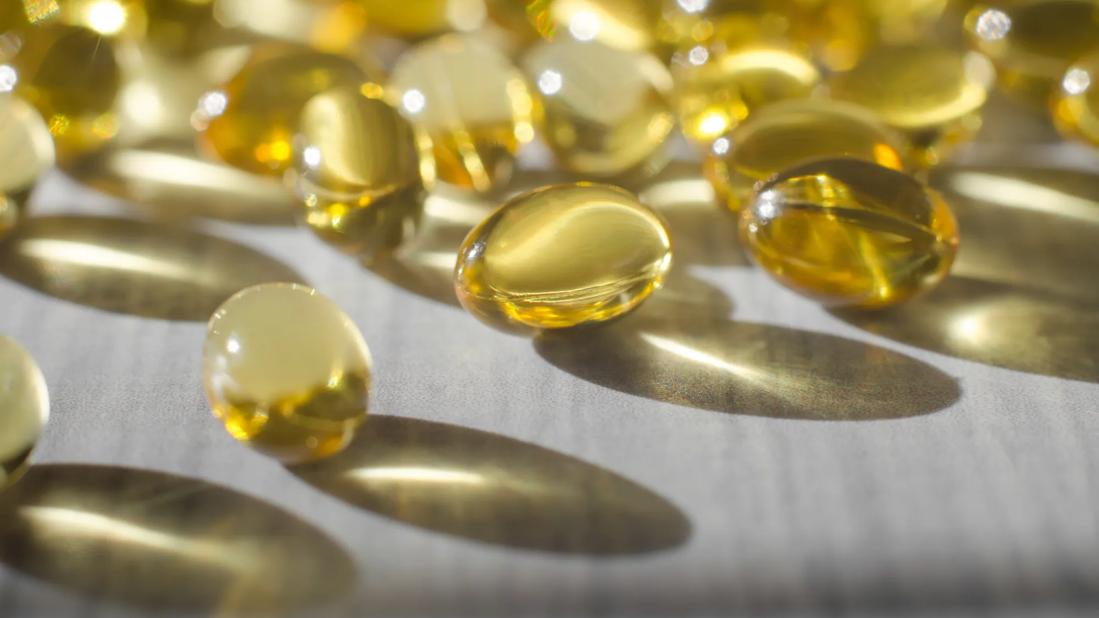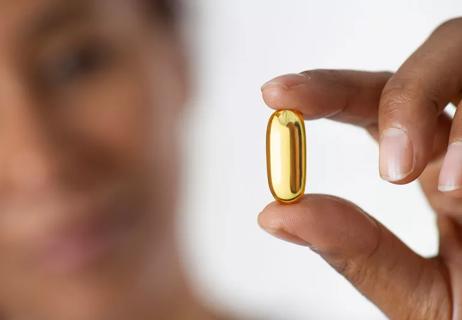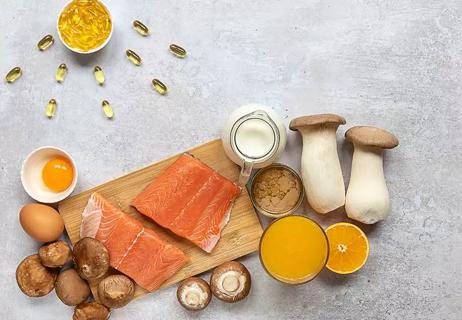Vitamin D is an umbrella term for both D2 and D3 — both help keep your bones and immune system strong

If you’re in the market for a vitamin D supplement, you might have come across bottles labeled as vitamin D3. Is that what you need? What is vitamin D vs. vitamin D3?
Advertisement
Cleveland Clinic is a non-profit academic medical center. Advertising on our site helps support our mission. We do not endorse non-Cleveland Clinic products or services. Policy
But wait, there’s more?! Vitamin D...2? What’s that about?
Confused? No need to be. Family medicine specialist Matthew Goldman, MD, shares the similarities and differences between vitamin D, D2 and D3.
We typically think of vitamin D as one thing. But in reality, vitamin D is a category. Vitamins D2 and D3 are the two main forms within the category.
Think of it like this: We can say “car” to mean anything from a two-door convertible to a three-row SUV. They’re all cars — four wheels, engines, seats, etc. — but they serve different needs. Vitamin D is the car, D2 and D3 are the types of car.
And, in case you’re curious, there’s no vitamin D1. At least not anymore.
“Scientists originally found a compound they named vitamin D1. But it turned out to actually be vitamin D2 mixed with other substances,” Dr. Goldman notes. (Fascinating tidbit for your next cocktail party icebreaker, eh?)
So, sticking with vitamins D2 and D3 — what are the similarities? The differences? And which is right for you? Let’s take a closer look to find out.
There’s good reason both D2 and D3 are considered vitamin D.
They’re both fat-soluble vitamins, which means they get absorbed into your body with the fats you eat. That also means they stick around longer. Your body can store extra vitamin D2 and D3 for future use.
Advertisement
And both work to provide similar benefits for your body, like:
Vitamins D2 and D3 come from different sources and work differently in your body. Here’s a quick look for reference, and then we’ll get into more detail:
| Vitamin D2 | Vitamin D3 | |
|---|---|---|
| Also called | Ergocalciferol | Cholecalciferol |
| Common sources | Plants, fungi and fortified foods | Sunlight, animal products and fortified foods |
| Effectiveness | Slightly less potent | Slightly more potent |
| Supplements | Often used in high-dose prescriptions and for people who follow a strict vegan diet | Often found in over-the-counter supplements, may be prescribed |
| Also called | ||
| Vitamin D2 | ||
| Ergocalciferol | ||
| Vitamin D3 | ||
| Cholecalciferol | ||
| Common sources | ||
| Vitamin D2 | ||
| Plants, fungi and fortified foods | ||
| Vitamin D3 | ||
| Sunlight, animal products and fortified foods | ||
| Effectiveness | ||
| Vitamin D2 | ||
| Slightly less potent | ||
| Vitamin D3 | ||
| Slightly more potent | ||
| Supplements | ||
| Vitamin D2 | ||
| Often used in high-dose prescriptions and for people who follow a strict vegan diet | ||
| Vitamin D3 | ||
| Often found in over-the-counter supplements, may be prescribed |
If there’s one thing that’s most likely to stand out in your mind about vitamin D, it’s that one way we get our fill is when our bodies create it from sunlight. That’s why it’s often called the “sunshine vitamin.”
What sunlight really does is support the synthesis of vitamin D3 in your body. Vitamin D2 isn’t created by sunlight. Instead, you find vitamin D2 in plant-based foods, like:
And in addition to sunlight, you can get your fill of vitamin D3 with foods like:
Dr. Goldman shares that vitamin D3 is generally more effective and longer acting than vitamin D2.
“When metabolized, vitamin D3 produces more biologically active compounds your body can use efficiently,” Dr. Goldman explains. “That makes it somewhat more potent than vitamin D2 — though both can effectively help raise vitamin D levels.”
When you get bloodwork and your provider checks your vitamin D levels, the number is a mix of both vitamin D2 and D3. And getting enough of either (or both) of them can help to keep your vitamin D levels in a healthy range.
“Vitamin D deficiency is common, especially among people who get limited exposure to sunlight,” Dr. Goldman reports. “It’s also seen in older adults, people with darker skin tones and people with conditions like osteoporosis or chronic kidney disease.”
Both vitamin D2 and vitamin D3 are available as supplements.
Over-the-counter supplements are more likely to be vitamin D3. Vitamin D2 is more often found in prescription-strength supplements from your provider. That’s not a hard-and-fast rule, though. Vitamin D2 is also available over the counter. And sometimes, providers may prescribe vitamin D3.
“In general, vitamin D3 is more commonly recommended as a supplement. It’s more widely available and highly effective,” Dr. Goldman shares.
But there are times when a provider may recommend vitamin D2 instead. Remember that vitamin D2 comes from plant-based foods, so it’s a better choice for people who follow vegan diets.
And while lots of people can benefit from vitamin D supplements, it’s best to talk with a healthcare provider, like a primary care physician, before starting a new supplement.
Advertisement
“Vitamin D is a powerhouse nutrient, but more isn’t always better,” Dr. Goldman warns. “It’s smart to check with your healthcare provider before starting supplements — especially at higher doses — to make sure you’re getting what you need without overdoing it.”
Advertisement
Learn more about our editorial process.
Advertisement

The ‘sunshine vitamin’ is found naturally in some fish and is added to other foods

In general, you want to take this ‘sunshine vitamin’ with a meal or snack that contains healthy fats

The benefits of vitamin D include stronger bones, a hardier immune system and better overall health

Research shows that high doses of vitamin D do nothing to lower your cardiovascular risk

If you’ve been diagnosed with breast cancer, having a normal range of vitamin D can help

Breathing, exercise, mindfulness and more can help you unwind and step away from your stress

Move a little more, eat a little healthier, sleep a little better and destress a lot

From breath meditation to yoga nidra, all types of meditation aim to help you feel calmer, more relaxed and present

Babies can get congested easily, but you can calm their cough by keeping them hydrated, using nasal drops and running a humidifier

Weight loss may cause loose, sagging skin and muscle loss to your rear

Several conditions, like vitiligo and fungal infection, can cause a loss of pigmentation, leading to white spots or patches on your skin